By Genevieve Bergman, Associate
Number TEN’s workplace design team has been hard at work researching post-pandemic work environments and taking a closer look at the transformation from the way things were to an altered, non-corporate landscape.
We have broken down the fundamentals into four parts—FEEL, FORM, FUNCTION & FUTURE—which reveal the trends that are shaping today’s workplaces.
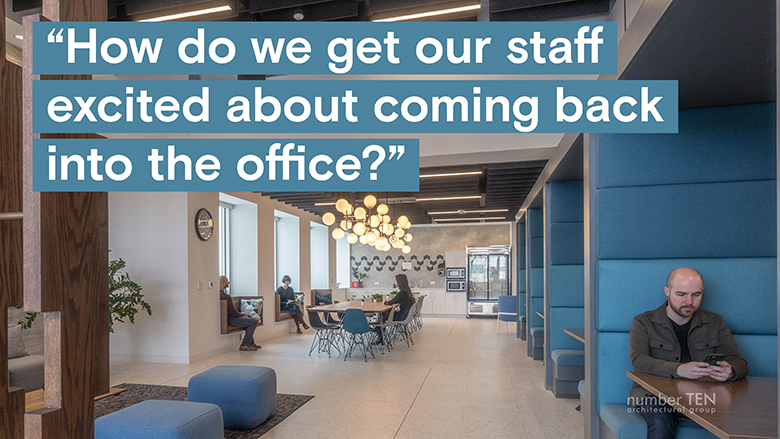
FEEL
Hospitality Influence
Hospitality design cues are helping to make the return to the workplace easier, because organizations are recognizing that employee loyalty is linked to how the workplace makes them feel.
Employees want to feel welcomed, comfortable, and entertained in their work environment. A space that promotes personal connections, comfort and well-being will always be desirable.
The transformative power of look and feel is evident as soon as you enter a space that has a warm and welcoming concierge-style reception. Reception areas and workplace cafes that are open and inviting, and don’t create a barrier between private office space and public areas, increase transparency and act as an invitation.
To transform an institutional space (think efficient, florescent lighting and durable, impersonal finishes) into something more hospitable, offices are moving towards soft, layered lighting with modern patterns and textures. These warm, comfortable spaces immediately put employees and visitors at ease.
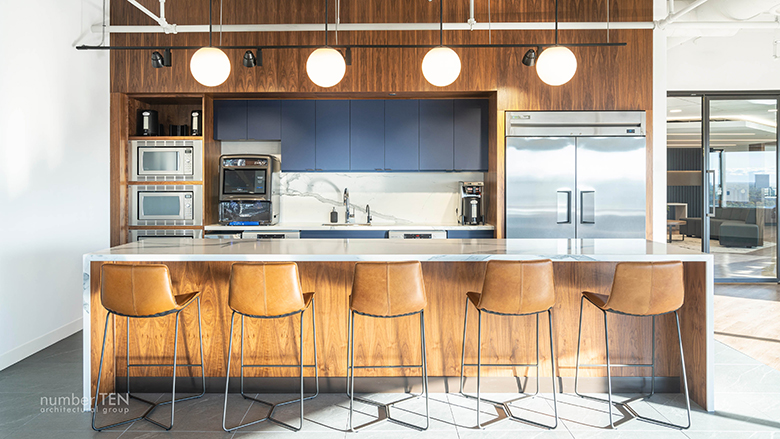
Residential Influence: Home, but Better
Post-pandemic, the desire for healthy work-life balance has evolved to a desire for healthy work-life integration. 70% of Canadians have dedicated workspaces at home. To ease and encourage the transition back to the office, workspaces must be better than home. Company-oriented workplaces need to shift towards employee-oriented designs. People are looking for spaces the reflect their identity and core values.
The past emphasis on selecting materials for durability dismissed livability. People crave spaces with materials and furniture that look comfortable and inviting, and that look like they live in the space.
Home workspaces are easily filled with familiar comforts. With many companies adopting hybrid work strategies, focusing on hotelling and shared offices, there must be space for staff to showcase personal items that bring them joy.
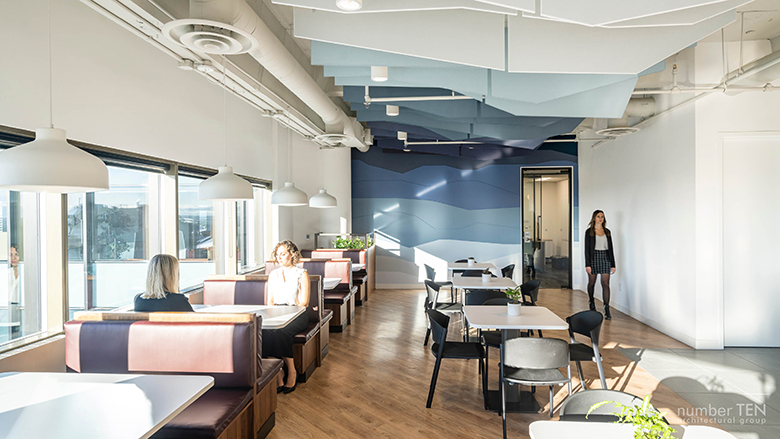
Connection with Nature
There is high value placed on wellbeing in the workplace. When working from home, many employees relished the ability to work outside, take a walk at lunch, or work near a sunny window. Back in the office, these employees require a more immersive connection with the natural world.
Dispersing a few planters in meeting rooms or office corners – a solution that feels impersonal and applied – is no longer enough. A workplace that facilitates access to outdoor spaces creates an immersive office experience more connected with the world.
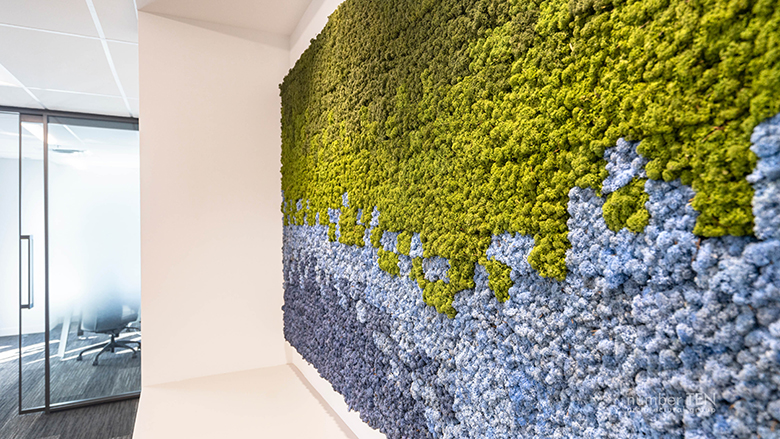
FORM
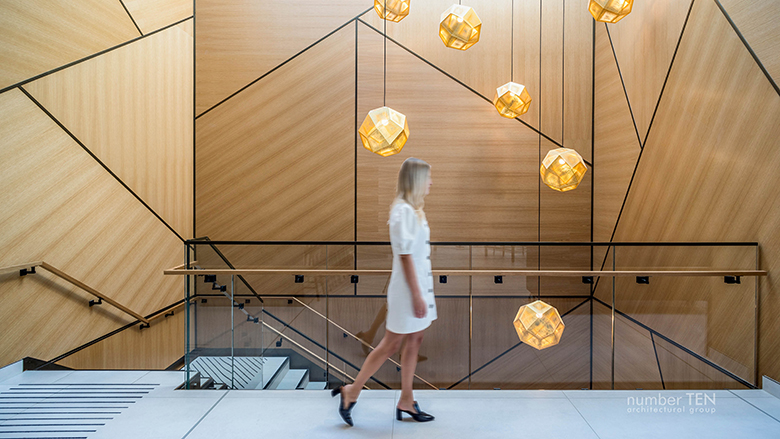 Typical office environments of the past favoured angular, geometric forms which created rigid, formal spaces. Post-pandemic, shapes are trending towards the natural and organic.
Typical office environments of the past favoured angular, geometric forms which created rigid, formal spaces. Post-pandemic, shapes are trending towards the natural and organic.
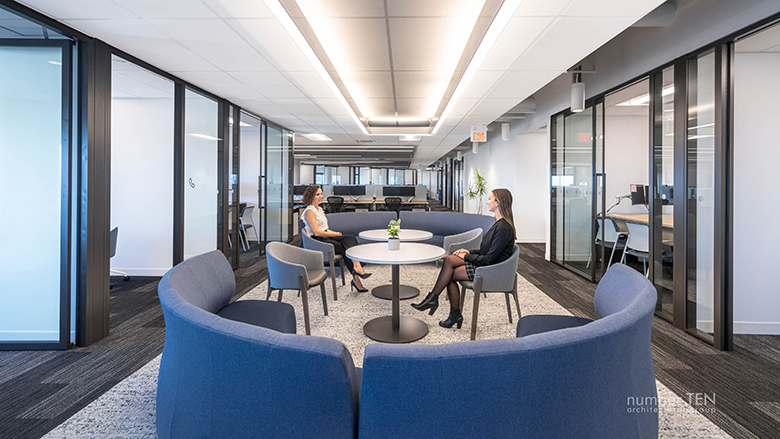 Architectural elements like arched doorways, rounded walls and curved ceiling features are organic expressions that create dynamic, flowing interior spaces. Lively light features with uniform lighting are seeing a resurgence in open work areas, and create rhythm and harmony in social spaces.
Architectural elements like arched doorways, rounded walls and curved ceiling features are organic expressions that create dynamic, flowing interior spaces. Lively light features with uniform lighting are seeing a resurgence in open work areas, and create rhythm and harmony in social spaces.
Hallways and corridors, previously solely utilitarian, are trending wider and are being used as break out spaces while creating exciting transitions between spaces.
FUNCTION
Underutilized spaces provide opportunities for new, beneficial spaces. Areas that previously met minimum expectations, such as water coolers, training rooms and boardrooms, can be reimagined as hydration points, auditoriums and dining rooms.
Reception spaces can open to office cafés, providing visitors with the opportunity to grab a specialty coffee before a meeting, and visitors space to work while waiting.
Closed spaces should be designed for meetings, collaboration and focus work. For an open floor plan to be functional and increase productivity, the open spaces must be balanced with single person enclaves and private spaces with full and partial enclosures. According to Gensler, 48% of employees rank focus as their main reason to work in the office. Open, collaborative areas help build employee trust and increase transparency. Closed, private spaces provide the opportunity for deep concentration, focus, and personal comfort. By providing employees with areas designed for different styles of work, the work spaces themselves facilitate organic flow between individual focus work and group collaboration.
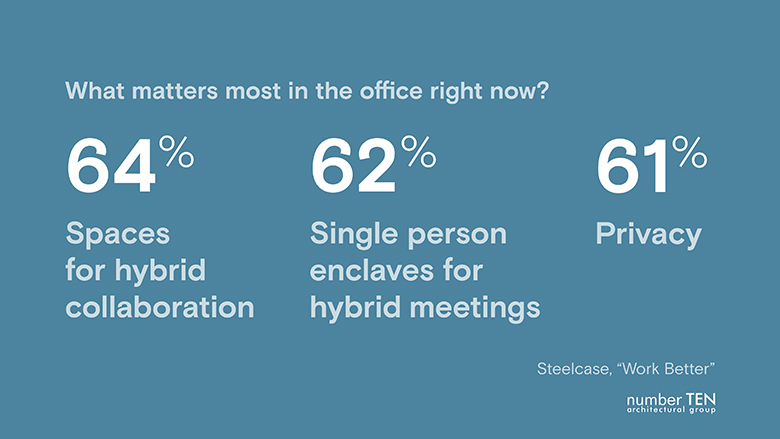
Elevated amenity spaces such as workplace cafés, outdoor spaces, tech-free zones, innovation hubs, and gyms were not available to all people working from home. They create an incentive to work in the office, because they are not easily recreated in the home, and demonstrate the value placed on employee wellbeing.
FUTURE
What does the future hold for the office as we know it?
The office is not going away, but it is changing. According to a recent Steelcase survey, 82% of Canadians will spend some time in the office and 71% of Canadians will split time between the office and home in a hybrid model. With the normalization of hybrid work models, we must design new spaces that help colleagues work seamlessly in person and virtually using technology, acoustics, space and lighting.
The role of the office has changed to a people-centred built environment. As workplace designers, our job is to create spaces that foster connection, relationships, networks, learning, mentoring and coaching – all beneficial aspects of office culture that suffered during the pandemic.
Real estate models are embracing mixed-use developments in downtown cores, and ‘Third Places’ have emerged as a key provider of choice. Third Places are familiar, comfortable, and welcoming neighborhood spaces and businesses that provide opportunities for unplanned meetings and socialization. Generation Z is entering the workforce in significant numbers, and their familiarity with hybrid work models and expectations of flexibility will influence the future of the workplace. The option to leave the office building and have walking meetings, or to meet at parks and local coffee shops is leaving employees feeling inspired, energized and less stressed.
With the normalization of the hybrid work model, companies must rethink their workplace culture and respond to new ways of working and managing spaces by putting people first. By designing flexible spaces and policies for people working remotely and in-person, collaboration and the transfer of knowledge will flourish.
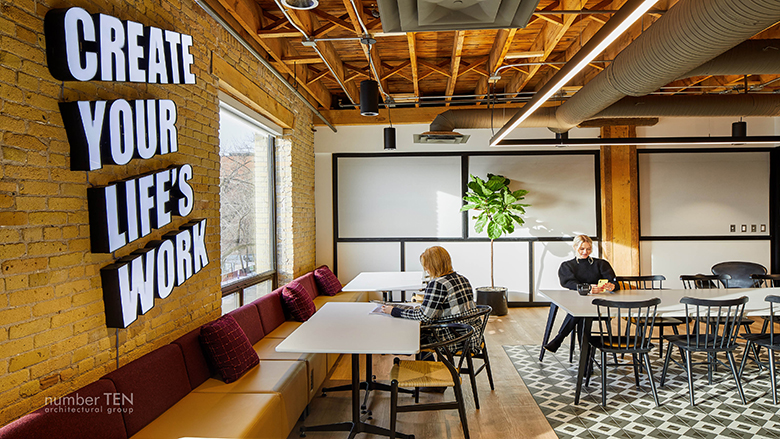
References:
- Work Better ‘The New Era of Hybrid Work’ Steelcase, 2022.
- Understanding Community and its impact to the Workplace by Global, 2022
- 5 Trends Driving the New Post-Pandemic Workplace, Gensler, 2022
- WORKPLACE TRENDS: A DECADE OF DATA, Gensler Research Institute, 2022
- Generation Z in the Workplace: What Employers Need to Know, Architectural Digest Pro, 2022
- Unpacking the Office, Using Pop-Culture to Deconstruct the Office Archetype, McKinley Studios, Black Chamber 2022
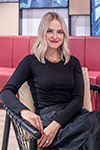 Genevieve is a Professional Interior Designer and Associate at Number TEN Architectural Group
Genevieve is a Professional Interior Designer and Associate at Number TEN Architectural Group

